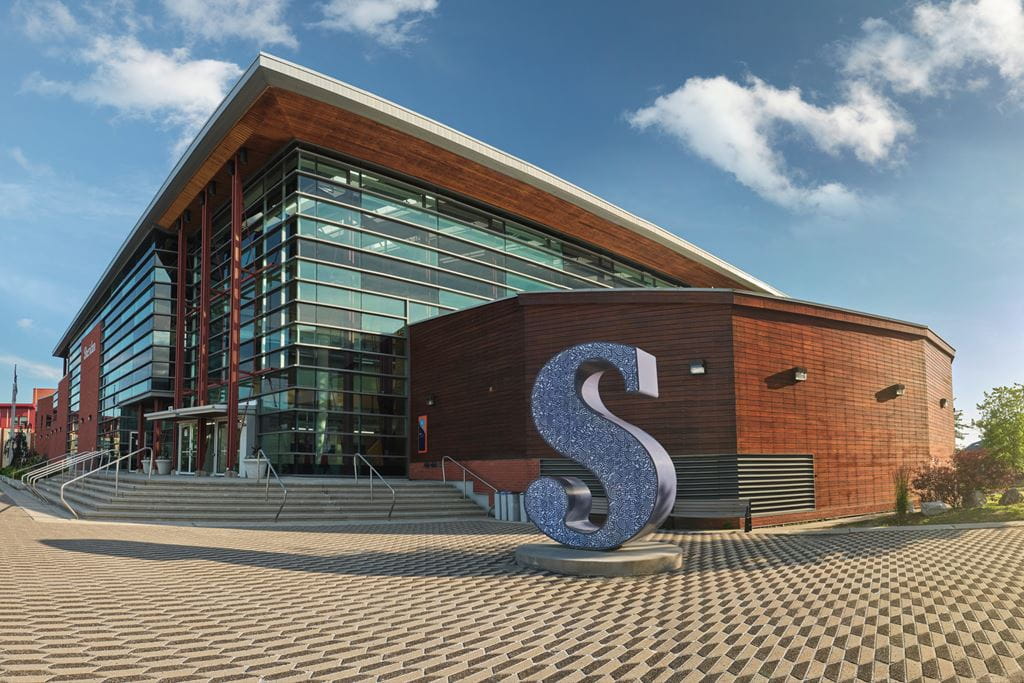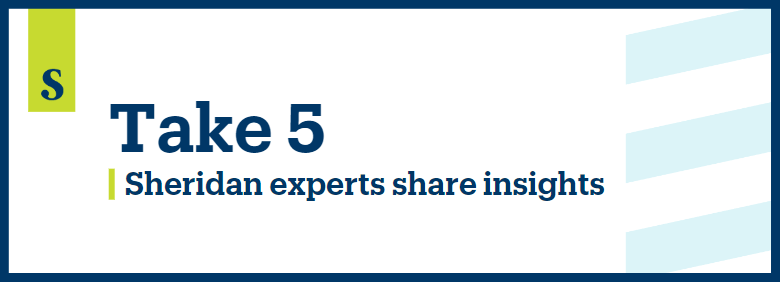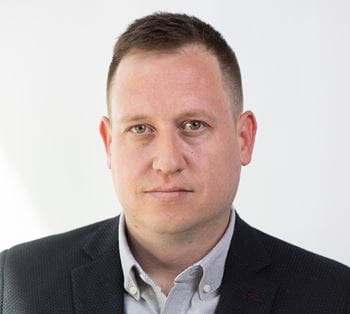
What will stop generative AI from taking all of our jobs?
 by Jon Kuiperij – Jan 23, 2024
by Jon Kuiperij – Jan 23, 2024  In Take 5, Sheridan's thought leaders share their expert insight on a timely and topical issue. Learn from some of our innovative leaders and change agents as they reflect on questions that are top-of-mind for the Sheridan community.
In Take 5, Sheridan's thought leaders share their expert insight on a timely and topical issue. Learn from some of our innovative leaders and change agents as they reflect on questions that are top-of-mind for the Sheridan community.
 Artificial intelligence’s use of predetermined algorithms and rules to perform preset tasks has enhanced our lives for decades, from optimizing manufacturing processes to recommending television series to providing a worthy opponent in chess. But the arrival of generative AI and its ability to create original content — including articles, images, videos, music and computer code — has many wary of its potential to disrupt the ways in which we learn, work and play.
Artificial intelligence’s use of predetermined algorithms and rules to perform preset tasks has enhanced our lives for decades, from optimizing manufacturing processes to recommending television series to providing a worthy opponent in chess. But the arrival of generative AI and its ability to create original content — including articles, images, videos, music and computer code — has many wary of its potential to disrupt the ways in which we learn, work and play.
In this edition of Take 5, Sheridan creativity and creative thinking professor and researcher Dr. Nathaniel Barr discusses the impact that generative AI has already had on the world of work, why automation can never replace human creativity, what we need to do to thrive in a generative AI world and more.
1. How does the emergence of generative AI compare to past disruptions to the workforce?
This is simply an evolution of the same debates that humanity has wrestled with throughout our post-industrial history. At its core: how can we make the most of new technology, and how do we adapt our skills to best fit our new reality?
Though the loss of jobs to generative AI is a reality for some roles, it is more likely that jobs remain but are transformed. Rather than be replaced by AI, augmented workers will emerge, whereby human ability will be expanded by technological aids.
2. How has generative AI already changed the way work is being done, what could be coming next, and what does this mean for the human workforce?
Process automation has been the most common use of AI to date, removing many rote, back-office tasks from our to-do lists. But this is just the beginning.
Medical decision making, financial trading or advising, and more recently advertising and other creative fields like filmmaking and interior design, are seeing advantages to offloading tasks and augmenting performance with AI. Not only can such technologies increase the accuracy of human judgments, they can augment creativity by enhancing divergent thinking and productivity.
As more and more tasks and processes are offloaded to AI, workers will increasingly focus on strategic decision making and visionary planning. For example, in a recent announcement that Microsoft and KPMG are partnering to put “AI at the forefront of professional services”, the benefits of augmentation are described as empowering workers to “unleash their creativity, provide faster analysis and spend more time on strategic advice.”
3. What's to stop generative AI from eventually taking all of our jobs?
Algorithms are imperfect and cannot be accepted with unflinching faith. In addition to lacking emotional intelligence, nuance and ethical decision-making ability, they are inherently biased by the data they learn from, potentially perpetuating or even amplifying social prejudices. Therefore, discernment by wise human operators remains necessary to consciously deliberate and reflect on a case-by-case basis how to apply AI to curate and select optimal and equitable outputs for each situation.
Not only is such discernment required for workflow decisions involving when and how to use AI; human judgment is required to decide if it should be used at all. As examples, research has shown that people have less trust in emails that were assisted by AI, and in a recent paper I co-authored, we found that people prefer human-generated over AI-generated art.
More profoundly, we also must use our minds to direct AI purposefully toward the most pressing problems we face, like climate change or misinformation, while mitigating the significant, even existential, risks it might pose. Ultimately, our most important job is to use our brains to make the most of new opportunities afforded by AI while deciding what we want to keep for ourselves.
4. What can we do to prepare for the new future of work?
We — societally, institutionally, organizationally and individually — must evolve as quickly as the technology around us.
Organizations must foster cultures of experimentation and embed processes for flexible, rapid, iterative testing, wherein they deploy and assess the effectiveness of different use cases. They need to re-think recruitment and selection processes, as the necessary skills and knowledge for success shift under our feet. Doing so will require significant changes to the way organizations operate long term, as this is not a one-time “transformation” but rather building capacity for an ongoing responsiveness to emergent capabilities.
Individuals must also re-imagine what it means to be job ready. Of course, fluency in technology is crucial, as more jobs pivot to reflect the reality of the Fourth Industrial Revolution. As more domain-specific skills and knowledge are effectively offloaded to AI, honing uniquely human skills becomes imperative.
Indeed, attributes closely connected to success in competencies not readily offloaded just yet — analytical and creative thinking, resilience, flexibility, and agility — were identified as core skills required by workers in the World Economic Forum’s (WEF) Futures of Jobs Report 2023.
5. How can higher education help prepare us for this new future of work?
Instilling these human skills will require significant changes to educational systems as we know it.
Here at Sheridan, alongside the cultivation of integral domain-specific expertise, we have been training students in the essential skills for the future: creativity, innovation, situational adaptability, communication, and collaboration of diverse teams.
Institutions the world over must adapt curriculum and transform education for the realities of this era, emphasizing another set of core skills identified by WEF — motivation, self-awareness, curiosity and lifelong learning — to ensure workers are poised to actively pursue reskilling and upskilling, requirements to maintain competitiveness in the global landscape.
Nathaniel Barr, PhD, is a Professor of Creativity and Creative Thinking at Sheridan College where he teaches in the Board Undergraduate Certificate of Creativity and Creative Problem Solving and the new Applied Creativity and Innovation Post-Graduate Certificate. He has published scientific and popular articles on a range of topics including creativity, innovation, the intersection of thinking and technology, AI in the workplace, attitudes toward AI, and transforming higher education for the challenges of the Anthropocene and Fourth Industrial Revolution.
Interested in connecting with Dr. Nathaniel Barr or another Sheridan expert? Please email communications@sheridancollege.ca.
The interview has been edited for length and clarity.
Media Contact
For media inquiries, contact Sheridan’s Communications and Public Relations team.
